LEGO has revealed the next LEGO Ideas set: 21315 Pop-Up Book. Chosen back in May from the crowd-sourced LEGO Ideas platform, the book’s final design has been kept secret until now. LEGO has figuratively taken the covers off the set which includes 859 pieces to build the book and two stories that fill its pages, as well as four minifigures and one microfigure. The set retails for $69.99 USD.
The Pop-Up Book is the brainchild of two fans, Jason Allemann and Grant Davis, two names you may recognize. Both Jason and Grant are regulars here on The Brothers Brick, having a long history of building excellent creations. However, Jason’s name may ring a bell for another reason, since this isn’t his first LEGO Ideas set. Jason also created 21305 Maze. (Check out our interview with him about that project.) This brings Jason into the exclusive double-feature LEGO Ideas club, which was previously occupied solely by Ellen Kooijman who created 21110 Research Institute along with 21302 The Big Bang Theory.
The box and contents
While we here at The Brothers Brick don’t like to spend too much time analyzing the box for LEGO products (we’re more interested with what’s inside), this box bears note for its artistic design that will likely stand apart from the usual fare at the LEGO store. The artwork features a striking book on a wooden writing table, surrounded by the office artifacts of older times. The book itself is almost levitating off the table, opening slightly and surrounded by a mystical glow. The image almost conjurs up the feeling you’d get from the beginning of classic Disney movies with their opening fairy tale books.
Now let’s move to the real heart of the experience, the plastic bricks inside. With a box about two-thirds the size of 21310 Old Fishing Store, the set feels appropriately hefty. Inside are six numbered bags, the manual, and the two 8×16 brown tiles that go on the book’s cover.
The 150-page manual devotes several pages at the start to the fan designers Jason and Grant, as well a brief introduction of the folks at LEGO who translated the original design into an official product. Wesley Alan Talbott is the fan-turned-LEGO designer who was responsible for the product design, while Crystal Marie Fontan created the graphic designs.
The next spread of pages features a brief history of the pop-up book, from its early origins in the 1200s to its modern forms in the late 1700s. This is a great bit of extra educational material that LEGO would do well to include in other sets more frequently and in greater volume. It won’t be of interest to every kid (or even adult) who builds the set, but for those who take the time to read, it could inspire even greater interest in history and art, along with a deeper appreciation of the set.
Lastly, the introduction includes a brief synopsis of the two tales portrayed in the set: Little Red Riding Hood, and Jack and the Beanstalk. Each summary is accompanied by a lovely pair of sepia-toned illustrations, one in a traditional style and one in brick form.
The build
Bags 1 and 2 consist almost entirely of dark green elements, with a small handful of black pieces thrown in. What’s immediately obvious as you open the bags, however, is that this is not an ordinary build. The abundance of SNOT elements is overwhelming in the most positive way possible. Just in the two bags that make up the book’s outer shell, I counted 116 dark green and black SNOT bricks of five different varieties.
 Apart from the plethora of SNOT bricks, the first third of the build is quite straightforward with bricks and plates stacked single-file into three walls connected by hinge bricks and plates. The SNOT bricks alternate facing inward and outward, so they can hold not only the book’s brown filigree cover but also some of the interior details.
Apart from the plethora of SNOT bricks, the first third of the build is quite straightforward with bricks and plates stacked single-file into three walls connected by hinge bricks and plates. The SNOT bricks alternate facing inward and outward, so they can hold not only the book’s brown filigree cover but also some of the interior details.
At the end of Bag 2, the raw base of the cover is complete though it’s completely devoid of any details or the faux pages that fill the interior. The two brown Technic bricks will eventually be hidden from the outside but are intentionally visible from the inside where they will serve as attachment points for the swappable stories. The window in the spine has a clever purpose we’ll take a closer look at later.
The rest of the book build moves quickly with Bag 3 filling in the pages including a bit of scenery inside the bottom corners, two small pieces of the Red Riding Hood scene, and the decorated exterior book cover. Amusingly, the instructions demonstrate how to grip the book when placing tiles on its spine by showing an illustration of a human-sized minifigure hand. If only LEGO sold those…
The front of the book showcases a beautiful “Once Upon a Time” title on a 8×16 tile printed in dark brown, off-white and gold. The intricate gold damask pattern and the stylized lettering designed by Crystal are among the best graphic design seen in a LEGO set in the company’s long history. The tiny golden 2×2 LEGO brick drawing captured in the tail of the B is the perfect finishing touch. (Although this isn’t the first time printing on an 8×16 file, there’s now even less excuse for not printing the info placard from the next Star Wars Ultimate Collector Series set in place the dreaded monster-sized sticker.)
In a delightful nod, the set includes both the original project’s creators’ last names as “authors” on the cover. It’s not hard to imagine that LEGO discussed printing these names directly on the main title tile, but happily, they’ve chosen instead to go the much more useful route and printed them on 1×6 tiles which sit below the main title.
The final three bags of pieces are used to construct the two tales which pop from the pages, with Bag 4 devoted to Little Red Riding Hood and the much smaller Bags 5 and 6 for Jack and the Beanstalk. When built, the two scenes are flat facades since they need to tuck away neatly into the book when folded. Nevertheless, the scenes are packed with details.
Grandmother’s house has brown columns attached to the exterior with SNOT bricks and a thatched roof made of bright light orange and yellow slopes. The two headlight bricks facing inward at the fold line puzzled me as I was building the set, as I couldn’t figure out their purpose. In a final step, though, a pair of cheese slopes are attached to them, stopping the scene from unfolding too far.
Moving on to Jack’s story, the scene has few interesting building techniques–though don’t mistake that as a shortcoming. There is beauty in its simplicity. The beanstalk breaks from the simple bricks and slopes hillscape, jutting up as a giant Technic beam. This one small bit of Technic gadgetry will help the scene come alive in a magical way, which we will show you coming up.
The completed set
There’s no denying the book looks great, like a dark green and brown cover evoking the leather of a well-worn tome from the expansive library of a Victorian gentleman. Jason and Grant’s original project featured a tan cover which was utilitarian, but this more than any other way, LEGO’s designers have improved upon the original design. The top of the book has a row of exposed studs, which irks my adult-fan tendencies to hide studs. However, the stud is a hallmark of the toy which LEGO is always keen to showcase, if for no other reason than people unfamiliar with the set can instantly recognize that it is, in fact, made of LEGO bricks.
But we still haven’t addressed the key feature. After all, this is a one-trick pony (more or less). Pop-up books open with the delightful surprise of the contents leaping out from their pages. The mechanism that Jason and Grant designed is flawless. The opening works smoothly, without any of the tiny catches or bumps that often plague LEGO contraptions.
The first story, Little Red Riding Hood, has three sections. The first and most obvious is the cottage, which is a great design despite not resembling Jason and Grant’s version. The green book makes for a pleasing grassy field in front of it while the tan page facade forms a small fence.
In the back, the cottage has two smaller scenes attached to tan 6×8 plates. The first features a table and magenta tea set (sadly it does not use the new teacup from the Harry Potter Collectible Minifigures line). On the other side is a bed, which is one of the best designs for a LEGO bed yet. It can actually fit a minifigure down inside of it and looks quite convincing. (It’s a similar idea to the hinged design we saw in Destiny’s Bounty last year, but far better executed here.) Of course, if you’re familiar with the story, you’ll know that the Grandmother sitting in bed has unusually big eyes, and a long nose…
All three sections of the story (bed, table and cottage) pop off easily. The table and bed are attached with just a few studs, and the folding cottage is held in with a Technic pin on each end. Pull the pins and the whole mechanism comes up. A pair of plates stick out vertically and serves as a handy alignment tool. Swapping scenes takes only a matter of seconds.
Once the main cottage mechanism and two extra sections for Red Riding Hood’s story are up, the inside of the book is bare except for the two permanent bits of scenery (and even these are easily removable if you’d like to customize your own interior).
You’ll note that there are two oddities in the center spine. The first is a black window frame. This is placed there because as the book folds, the bottom corners of the attached scene stick down just a hair beyond the stud surface. The natural flex in the elements would easily absorb this, but the fraction of an inch of extra space ensures the mechanism works flawlessly.
The second part is a black plate 1×2 with bar, which serves as the anchor point for Jack’s beanstalk, which clips in. (The raised bar is not disguised in any way in the Little Red Riding Hood scene.)
The scene from Jack and the Beanstalk is easily swapped. The main mechanism for Jack’s tiny village attaches in the same manner as the cottage. In the back, you connect a string from the Technic beanstalk down to a rock (fixed to a stud that used to hold Grandmother’s table).
With the scenes now swapped, it’s time for the big reveal. As the book opens, the beanstalk grows and the castle swings up into place. I’ll happily admit that the floating giant’s castle makes this scene an easy favorite for me.
Since the giant is a represented by a minifigure, the village is created in microscale and Jack is a painted trophy microfigure. The new double-cheese slopes in orange make great cottage roofs. The tiny windmill may not be fan-quality micro-building, but it is awfully cute.
The castle in the sky is very simple, but a pair of grey skates are used add a bit of textural interest. Additionally, there’s a tiny bit of stairs and cloud for Jack to stand on.
The minifigures
The Pop-Up Book includes four minifigures plus a microfigure, with two from Jack’s story and three from Red’s. They’re great renditions of the characters impressed in everyone’s minds from childhood retellings of the classic tales.
Red has the “cowl with hair” element that was first used on Lloyd from The Ninjago Movie Collectible Minifigures. She also sports a medium azure skirt with a lovely vintage floral pattern (which almost hides her short brown legs). Red’s torso is printed on the back but hidden by a soft, unstarched fabric cape. And of course she’s carrying a picnic basket with sweets.
Grandmother and the Wolf might be among the more morbid pairs of minifigures in the LEGO universe, but nonetheless they are great figures. Grandmother is pretty straightforward with a grey bun and pink pajamas, while the Wolf has the same pink pajamas but bearing signs of quite the struggle. I do hope Grandmother got in a few good wallops with the cast iron pan before going down. The Wolf’s head is the newer style from the Collectible Minifigures Series 14 Werewolf with a fun new print. In a futile effort to disguise himself, the Wolf is wearing Grandmother’s glasses, and if you look very close you can even spot a smear of lipstick.
The Giant looks like a standard castle figure at first glance, but he’s actually loaded with great detail. There are barrels attached to his baldric, and he’s tucked the golden goose in his pocket with a golden egg in a satchel, too. On the back, he is hiding a few tiny minifigure skulls of a few less fortunate intruders.
Finally, there’s the Jack microfigure. Jack is blue and printed with several colors showing a shirt and overalls. There’s no printing on the back except for the dark tan hair all the way around his head. (Curiously, an extra was included. LEGO hasn’t included extras of printed microfigures before, so it remains to be seen if that’s the case with all copies of this set.)
The original Ideas submission
Looking at what was submitted to LEGO Ideas, the original builders were wisely conservative and focused more on getting the mechanism to work well rather than embellishing the set with details unlikely to withstand heavy play by children. While the specific scenes are different and the look of the book cover has changed, the finished set exudes the heart of the original model. The fact that LEGO chose to include more than one scene–playing off Jason and Grant’s ideas for several scenes–is fantastic. (I do miss the clasp which held the book’s halves together, though.)
Interestingly, this isn’t the first book of fairy tales that LEGO has released this year. That award goes to the awesome promo set 40291 Creative Personalities: Hans Christian Andersen. The two LEGO books look surprisingly similar, though the promo set is much smaller (and now I wish it were a pop-up book too).
Conclusion & recommendation
21315 Pop-Up Book is a perfect example of the creativity the fan community can offer. The idea is original and unlike anything else you’ve got in your LEGO collection. The finished book is absolutely gorgeous, and the models contained within are clever and inspiring. (I’m sure it won’t be long before we see many unique variations of book inserts and covers created by the LEGO fan community.) It’s a bonus that the set comes at a great price too, fitting solidly into the “good value” category for new LEGO sets with 859 pieces for $69.99.
My favorite aspect of the set is that it’s exceedingly easy to display, inside and out. Simply fold it up and slot it on a shelf where it looks right at home. And ultimately, no matter your take on fairy tales, you’ve got to admit this is a truly novel set.
LEGO Ideas 21315 Pop-Up Book includes 859 pieces and four minifigures. It is available Nov. 1st for US: $69.99 | Canada: 89.99 CAD | UK: £59.99.
The LEGO Group sent The Brothers Brick an early copy of this set for review. Providing TBB with products for review guarantees neither coverage nor positive reviews.

























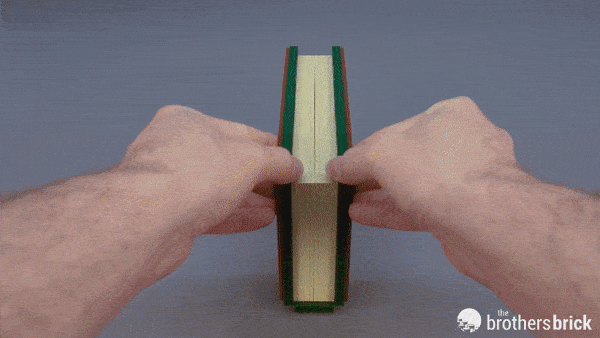















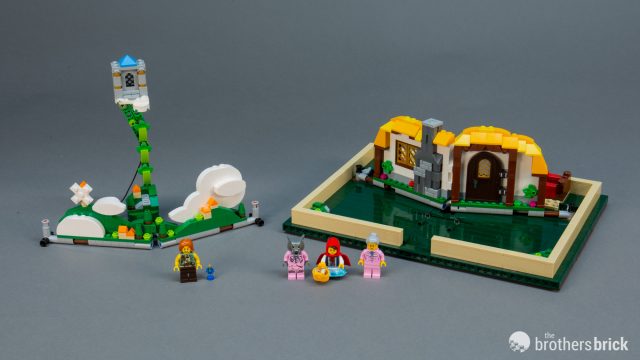



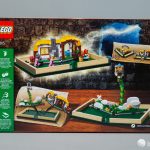










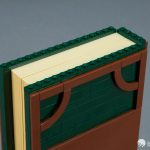













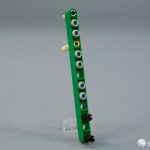
















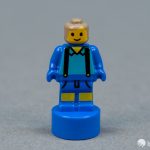

Good review. Small correction: the Saturn V included an extra printed astronaut microfig (four total). Interestingly, that was also in an Ideas set.
The beanstalk scene has a great Super Mario vibe going on, too.
I think it’s only a matter of time someone creates one of those..
This was such a fun set review to read. It was a great way to start the morning. We will definitely be getting one (possibly more?) of these charming sets. Thank you Chris.
I absolutely can not wait for this set. It is such a new and innovative concept for lego to take on that I hope that this may inspire a new line of sets. Wouldn’t it be cool to get a Moby Dick or Scrooge set just for starters? The possibilities are endless.
I believe the Civil War set also had an extra Ant-Man figurette.
https://www.bricklink.com/catalogItemIn.asp?M=90398pb007&in=S
and Saturn V had a spare nano-spaceman :-)
Nice review, thanks.
The set is really nice and will be a nice gift for xmass.
Really happy that they included the creators’ names, it should (must) be done in every idea set.
I love this set and will definitely get one. I believe the life sized minifigure hand is that of the wolf’s.